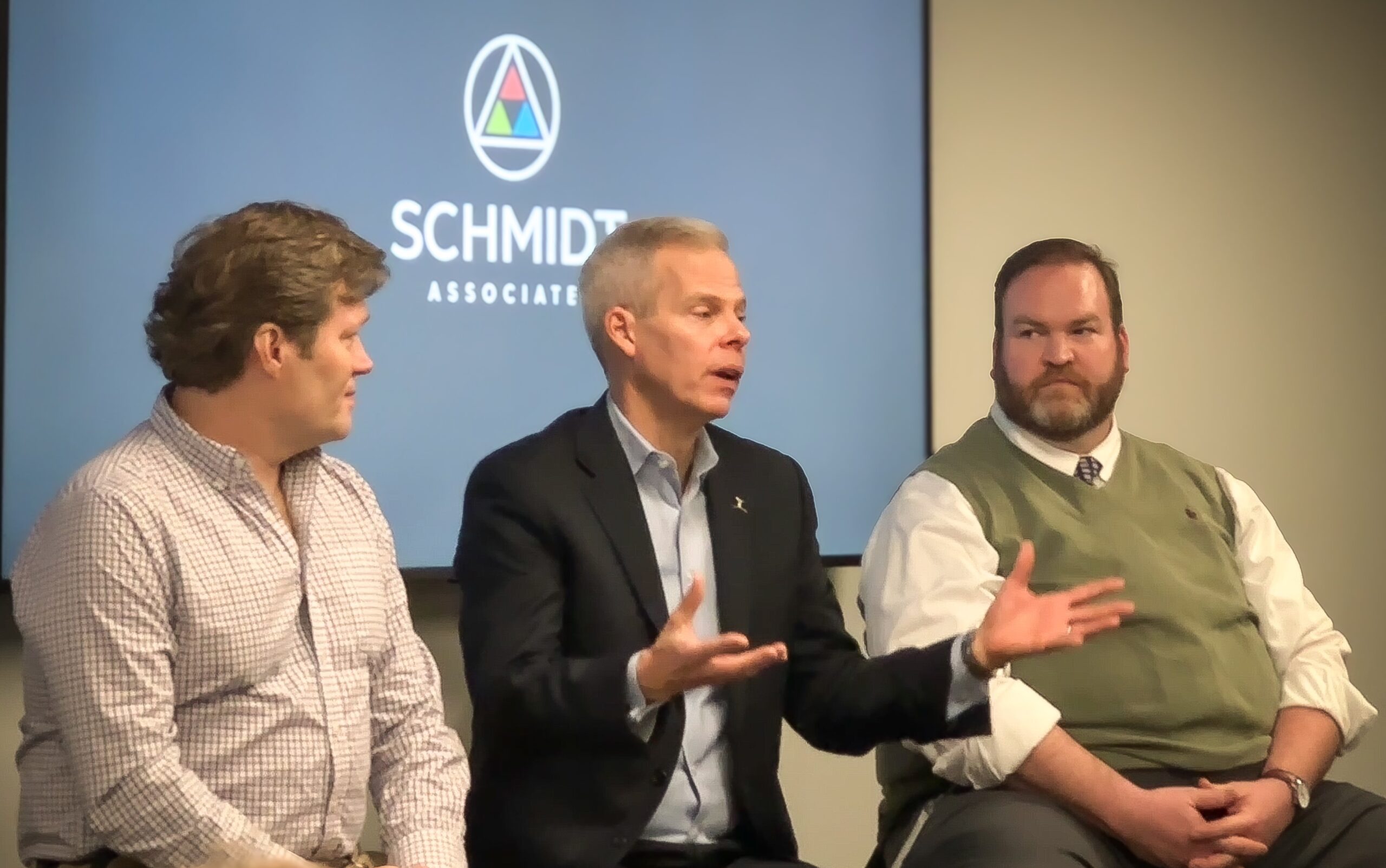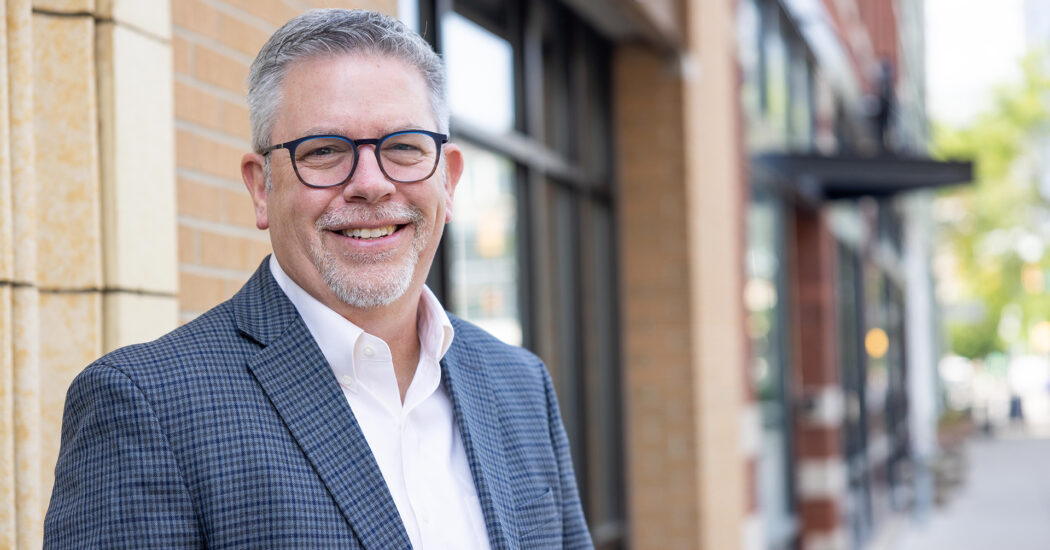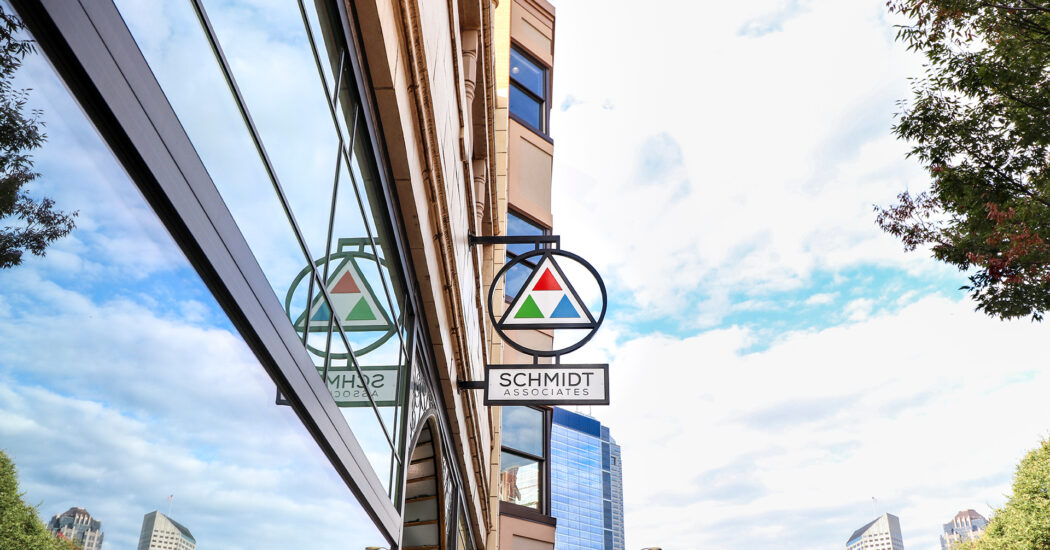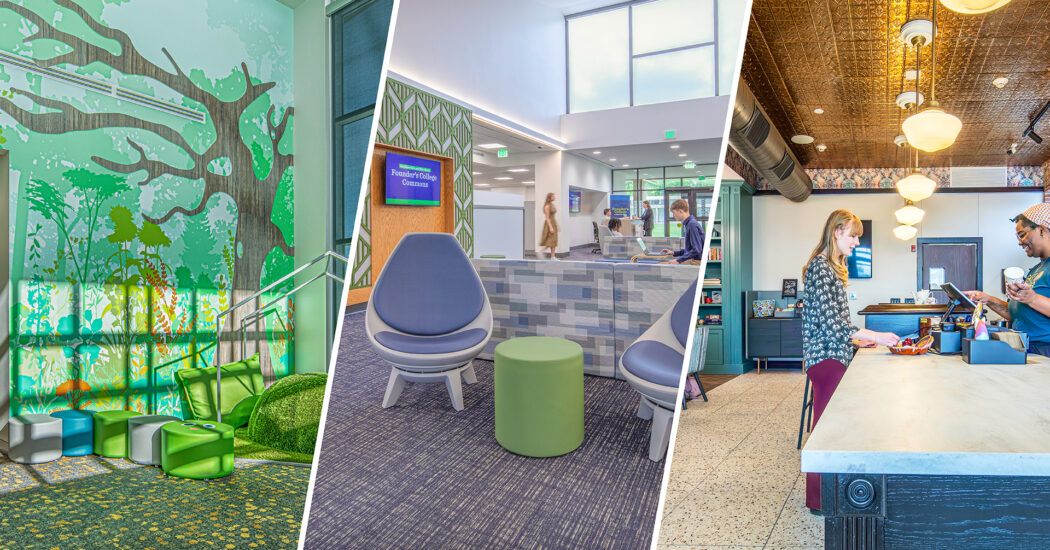Bridging Visions and Strategies: Insights from Schmidt Associates’ Owner Roundtable
-
Category
Perspectives, Leadership -
Posted By
Eddie Layton -
Posted On
Feb 12, 2024

As part of our ongoing professional development offerings through Schmidt Academy, the firm recently hosted a captivating owner roundtable spotlighting influential community leaders. The event, hosted by CEO and Principal Sarah Hempstead and me, featured Alan Witchey, President and CEO of The Damien Center, James Johnson, CEO of the Indianapolis Symphony Orchestra, and Adam Parsons, Director of Facilities for the Indianapolis Public Library. These visionary leaders shared invaluable insights into their facility needs, expectations from AEC firms, and broader organizational strategies. Follow along as I provide a recap.
Speaking Up and Transparency: The Core of Collaboration
One of the key themes underscored by Witchey, Johnson, and Parsons was the importance of clear communication and transparency when working with AEC firms. They stressed that speaking up, asking hard questions, and maintaining an open dialogue are fundamental to successful project completions. This approach not only results in meeting project goals but also fosters a relationship built on trust, mutual respect, and future opportunities.
Community Involvement: More Than Just Building Spaces
The discussion also covered the significance of community involvement. The leaders emphasized that AEC firms, like Schmidt Associates, play a crucial role in shaping the community’s landscape. By understanding and engaging with the community, architects, engineers, and interior designers can create spaces that truly resonate with those they are meant to serve.
Fundraising and Sustainability: Key Organizational Pillars
Another focal point was how these organizations apply fundraising and sustainability goals within their projects. Fundraising, an essential aspect for nonprofits, demands creative strategies that align with the organization’s mission and values. Similarly, sustainability is no longer an option but a necessity, requiring innovative approaches to achieve environmental responsibility.
The Pitfall of Losing Sight of the Big Picture
A critical takeaway from the discussion was the potential for architects, engineers, and interior designers to lose credibility if they fail to see the “big picture.” The leaders highlighted that understanding the vision and strategy of the organization is vital. Professionals in the AEC industry must transcend beyond the technical project aspects and creatively embrace the broader impact of their work and how it ultimately impacts the community.
Creativity, Solutions, and Collaborative Support
Finally, the roundtable concluded on a note of optimism and encouragement. The panelists agreed that there’s always ways to improve by fully understanding visions, being creative, and providing practical solutions. They emphasized the importance of leaning on each other for support and ideas, harnessing the power of collaboration in achieving common goals.
A Unified Path Forward
Our owner roundtable was more than just a discussion; it was a call for AEC professionals to align closely with their clients’ visions. By being communicative, transparent, community-oriented, and transformative, AEC firms can not only meet but exceed expectations, crafting spaces that truly embody the aspirations of those they serve.
This blog aims to capture and offer valuable insights for both AEC professionals and the wider community. Such events highlight the dynamic relationship between space creators and users, reinforcing the belief that, together, we can build a more connected and sustainable future.
Eddie Layton, AIA, LEED AP BD+C, is a project manager | associate for Schmidt Associates where he leads design teams while making sure Owners receive the spaces they imagined. Eddie also serves as a mentor to others and helps to lead the firm’s Community studio. To Eddie, architecture is the lifeblood that creates spaces where people live, work, learn, and play. He is happiest when he sees the impact of his work on Midwest communities.







